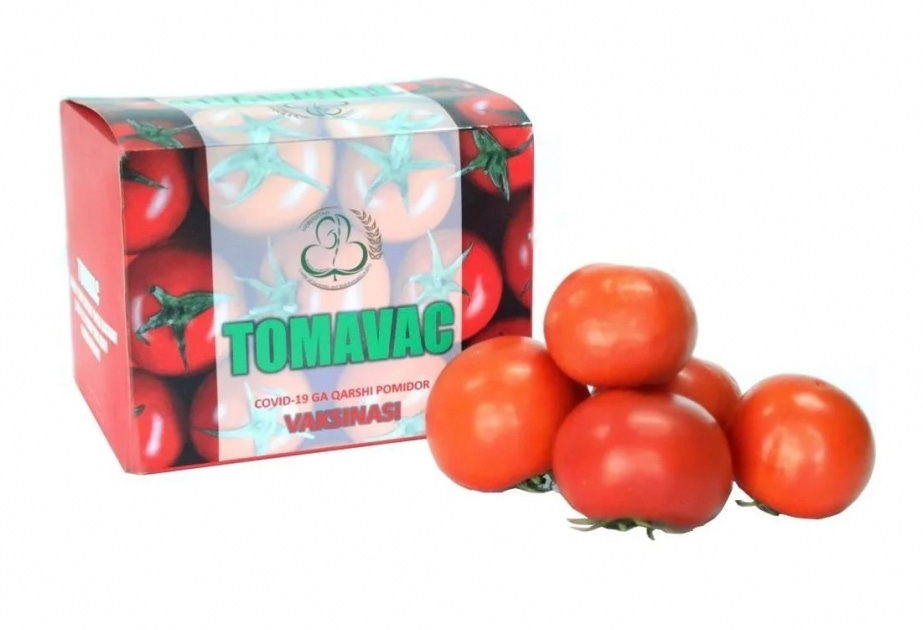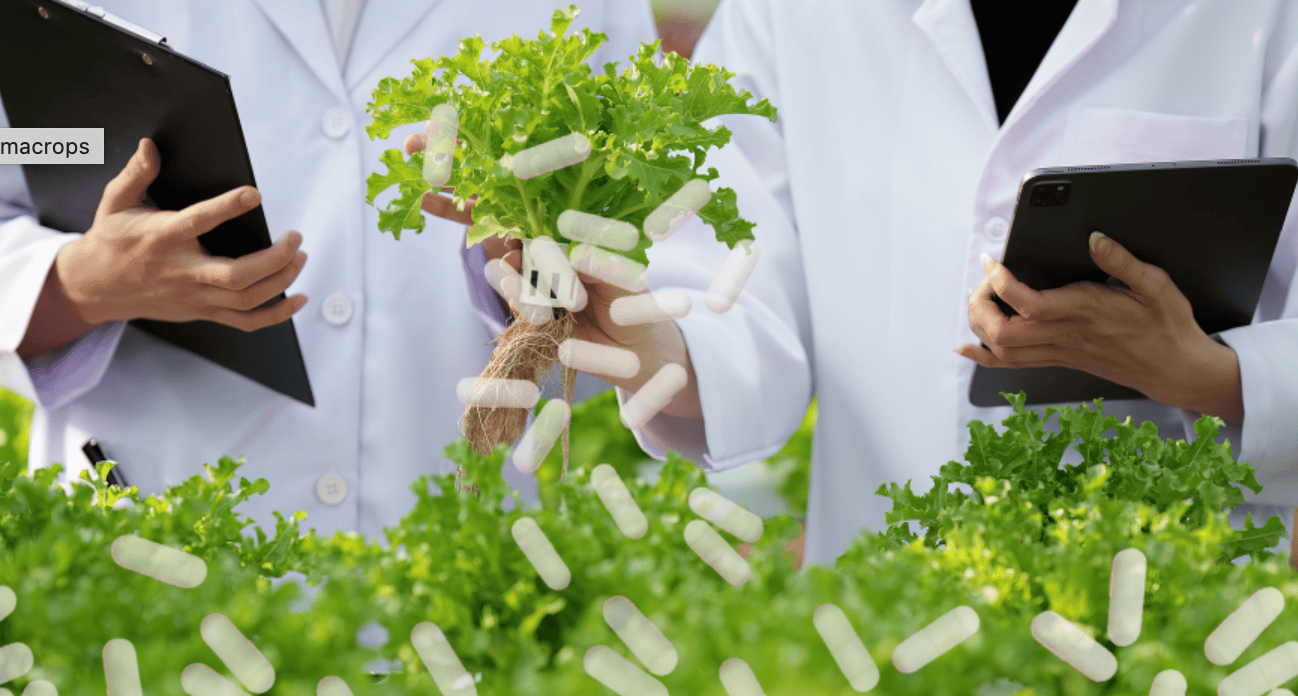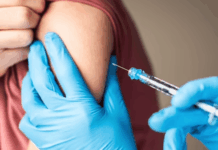Congress made adding drugs to food illegal in 2007, but open air tests have contaminated food crops since the 2002 ProdiGene scandal. HB1894 does nothing. Demand a ban on testing pharma crops instead.
March 5, 2024 | by Alexis Baden-Mayer
Organic Consumers Association
All of this talk in the mainstream media about the Tennessee legislature’s fight against the “lettuce vaccine” is much ado about nothing—but not because vaccines in our food supply isn’t a real threat, as the “fact-checkers” would have you believe.
Edible vaccines might not be approved for the produce aisle yet, but we’ve known that pharmaceuticals and vaccines are grown in food crops—and are contaminating the U.S. food supply—since 2002 when news broke of the ProdiGene scandal. (More on that below.)
Congress made adding drugs to food illegal in 2007. In Section 912 of the Food and Drug Administration Amendments Act of 2007, “Prohibition against food to which drugs or biological products have been added,” Congress forbade adding pharmaceuticals, including vaccines, to food unless the FDA “has issued a regulation, after notice and comment, approving the use of such drug or such biological product in the food.” The FDA never created a process for this, so no pharmaceutical food has ever been commercialized, but many have been tested.
Pharmaceuticals and vaccines might not be added to food legally, but they are contaminating food illegally.
Even though Congress made adding drugs to food illegal, it continues fund research that could contaminate the food supply. On November 14, 2023, Congressman Thomas Massie (R-KY), got the House to vote “unanimously to stop funding transgenic edible plant vaccines [see below], but that prohibition was left out of the new omnibus. So your taxpayer dollars will be funding edible plant vaccines, if the enormous spending bill passes this week,” he tweeted on March 4, 2024.
Amendment No. 115 Offered by Mr. Massie
The Acting CHAIR. It is now in order to consider amendment No. 115
printed in part B of House Report 118-272.
Mr. MASSIE. Madam Chair, I have an amendment at the desk.
The Acting CHAIR. The Clerk will designate the amendment.
The text of the amendment is as follows:
At the end of the bill (before the short title), insert the
following:
Sec. __. None of the funds made available by this Act may
be used to fund any grant related to any transgenic edible
vaccine.
The Acting CHAIR. Pursuant to House Resolution 864, the gentleman
from Kentucky (Mr. Massie) and a Member opposed each will control 5
minutes.
The Chair recognizes the gentleman from Kentucky.
Mr. MASSIE. Madam Chair, I rise in support of my amendment, which
states: ``None of the funds made available by this Act may be used to
fund any grant related to any transgenic edible vaccine.''
Madam Chair, does the term transgenic edible vaccine sound like
something out of a science fiction dystopian novel? Does the term
transgenic edible vaccine sound like something out of a horror film?
Well, it is not.
It is the scientific term that is used for research that we are
funding with U.S. taxpayer dollars. This concept that we would inject
RNA or DNA into our food supply, that we would encourage plants to grow
vaccines within them, and that we would then encourage animals or
people to consume these vaccines by consuming the food. Yes, we are
funding this, but we should not, and there are several reasons that we
should not be funding this.
One is, you can't control where the pollen goes from a plant. Many of
these experiments happen outside of a greenhouse, outside of controlled
facilities. In fact, we saw an incident where a transgenic edible
vaccine was being grown in corn many years ago. What happened the next
year when they grew soybeans on the same plot where this transgenic
edible vaccine was grown?
By the way, this vaccine was for pigs. It was to keep them from
getting diarrhea. It was never meant for humans. The next year they
grew soybeans on that same plot of land, and some of the corn sprouted
on its own and was mixed with these soybeans. Five hundred bushels of
soybeans were harvested that had to be destroyed because they were
commingled. This transgenic edible vaccine that was meant for pigs was
commingled with soybeans that could have gone into human food
consumption.
The offending researchers had to pay hundreds of thousands of dollars
in fines. However, do we know if we caught all of the instances of
these escapes of this pollen? In fact, this happened not just once, but
it happened again and in a different way. The pollen wafted over to a
different field, and it pollinated corn in a different field. Over 150
acres of corn had to be destroyed in that instance because they were
experimenting with transgenic edible vaccines. In that case, those
vaccines were meant for animals.
Here recently, however, we have been funding transgenic plant
vaccines, edible plant vaccines for human research at University of
California, Riverside. They are right now trying to grow spinach and
lettuce with the idea that humans would then consume this at a salad
bar or something.
How do you know the dosage? What does it mean to have informed
consent when you don't know what is in your food? What does it mean to
have informed consent when you don't know when you are being served
medication for dinner?
This is such a ridiculous concept that we shouldn't even have to
debate it, but here we are. We funded it through the National
Institutes of Health, the USDA, and NSF.
I will close by saying this: I offered this amendment on the
Agriculture appropriations bill to prevent the USDA from funding this
type of research. I am offering it on this appropriations bill to
prevent it being funded in this appropriations bill, as well.
This amendment passed by a voice vote on the Agriculture
appropriations bill. I hope that we will see the wisdom in this
amendment today and pass this also with unanimous support.
Madam Chair, I yield back the balance of my time.
The Acting CHAIR. The question is on the amendment offered by the
gentleman from Kentucky (Mr. Massie).
The amendment was agreed to.What we need from our state legislators are bills to ban open-air field trials of pharma crops. Unfortunately, this Tennessee bill, HB1894, does nothing about this. Here’s the full text:
BE IT ENACTED BY THE GENERAL ASSEMBLY OF THE STATE OF TENNESSEE:
SECTION 1. Tennessee Code Annotated, Section 53-1-102(14), is amended by designating the existing language as subdivision (A) and adding the following as a new subdivision (B):
(B) “Drug” also means food that contains a vaccine or vaccine material;
SECTION 2. Tennessee Code Annotated, Section 53-1-102, is amended by adding the following as a new subdivision:
( ) “Vaccine or vaccine material” means a substance intended for use in humans to stimulate the production of antibodies and provide immunity against disease, prepared from the causative agent of a disease, its products, or a synthetic substitute, treated to act as an antigen without inducing the disease, that is authorized or approved by the United States food and drug administration.
SECTION 3. This act takes effect upon becoming a law, the public welfare requiring it.
This nothing burger of a bill has been used as an excuse for corporate-controlled media “fact-checkers” to tell us we have nothing to worry about.
The truth is that, because of field-tests of genetically engineered crops, including pharma crops, vaccines are contaminating our food supply—and have been since 1992.
This first made the news when the ProdiGene scandal (that Congressman Massie referenced above) broke in 2002. A corn crop genetically engineered by ProdiGene to produce a vaccine for pigs contaminated 500,000 bushels of Nebraska soybeans worth $2.7 million. The year after the GMO pig vaccine corn was grown, the same land was used to grow soybeans for human consumption. The soybeans were harvested and sent to the grain elevator before it was discovered that the GMO pig vaccine corn had grown like a weed amongst the soybeans and contaminated the whole lot. The same season, a similar thing happened in Iowa, where 155 acres of corn grown growing next to a plot of ProdiGene’s GMO pig vaccine corn was contaminated by windblown pollen.
The ProdiGene contamination incidents were said to involve a vaccine for a bacteria-induced diarrhea that infects pigs, but the company was also engineering corn to produce an HIV vaccine and a blood-clotting agent. At the time, ProdiGene had received 85 test permits for experimental open-air trials of genetically engineered biopharmaceutical and chemical crops for planting in at least 96 locations.
ProdiGene received a $6 million investment from the Governors Biotechnology Partnership, funded by Monsanto and chaired by Iowa Governor Tom Vilsack. Vilsack, who is currently President Joe Biden’s Agriculture Secretary and also served in that role for 8 years in the Obama-Biden Administration, didn’t want any restrictions placed on experimental pharma crops.
Vilsack said, “We should not overreact and hamstring this industry.” That his was reaction to the biggest food companies’ trade lobby, the Grocery Manufacturers Association, when they pleaded with him to protect food crops from pharma crops.
ProdiGene is still conducting open-air field trials of pharma crops under a new name, the Applied Biotechnology Institute, but with the same leadership. CEO John A. Howard is still all about “plant-based oral vaccines” which he says will “increase convenience for the consumer.” He currently sells:
TrypZean, Cellobiohydrolase & Manganese Peroxidase– Grown in corn, TrypZean was “the first large-scale protein product from transgenic plant technology.” It is a synthetic version of trypsin, an enzyme found in the small intestine that digests protein molecules by cutting long chains of amino acids into smaller pieces. Cellobiohydrolase and manganese peroxidase are other synthetic versions of trypsin that the Applied Biotechnology Institute has engineered corn to produce. Trypsin’s amino acid slicing capacity makes it very useful in genetic engineering. The Applied Biotechnology Institute advertises their synthetic trypsin for use in cell cultures, as well as vaccine and insulin manufacture. A 2014 article published in the Monterey County Weekly, “Monterey County is poised to get its first GM crop: corn for pharmaceuticals,” quipped that TrypZean “resembles cocaine more than corn.”
Avidin – Avidin is the protein found in raw egg white, which combines with biotin and hinders its absorption. The Applied Biotechnology Institute has engineered a GMO version of avidin into corn. According to the abstract of “Commercial Plant-Produced Recombinant Avidin,” a paper published by John Howard in 2014: “Recombinant egg white avidin was the first recombinant protein product manufactured and sold from a plant system. Recombinant avidin is functionally equivalent to chicken avidin, including its binding activity to biotin. This recombinant protein was used to demonstrate that plants cannot only be used to express animal proteins but these could be purified economically to produce a competitive product. Recombinant avidin was also in ground corn meal that was fed to mice to demonstrate that the protein can survive the digestive system and elicit antibodies when orally delivered in the corn matrix. Thus, avidin demonstrated the utility of the plant production system in general as well as its utility as a delivery system for oral vaccines.”
Endocellulase – Endocellulase is an enzyme required to break down cellulose and is useful to the biofuel industry. The Applied Biotechnology Institute has engineered a GMO version of endocellulase into corn, as explained in John Howard’s 2011 paper, “Manipulating corn germplasm to increase recombinant protein accumulation.” The most vocal opponents of corn engineered to break down quickly into ethanol are the North American Millers Association. When Syngenta got a GMO ethanol corn they called Enogen approved in 2011, the millers warned that “it would only take one kernel of Enogen corn mixed with 10,000 kernels of food corn to ruin the food processing abilities of food corn.” Contamination was inevitable. By 2017, Enogen contamination was a regular occurrence forcing farmers to destroy tens of thousands of bushels of corn. It is also suspected to be the reason masa flour produced tamales that “were gooey, fell apart and even made some people sick.”
Brazzein – Brazzein is a protein found in the oubli fruit that is up to 2,000 times sweeter than sugar. The Applied Biotechnology Institute has engineered a GMO version of brazzein into corn, as explained in John Howard’s 2005 paper, “Expression of the sweet protein brazzein in maize for production of a new commercial sweetener.”
Aprotinin – Aprotinin is a protein found in the bovine pancreas that has been marketed by Bayer and now Nordic Group in its natural form for use in cardiac surgery to minimize bleeding and reduce the need for transfusion. The drug was removed from the worldwide market in 2007 after studies an increased risk of death with aprotinin compared with other blood clotting agents, but it has since been reapproved for use. It was studied as a COVID treatment, but didn’t produce favorable results. A GMO version of aprotinin has been engineered into corn, as explained in this 2014 article edited by John Howard, “Production of Pharmaceutical Grade Recombinant Native Aprotinin and Non-oxidized Aprotinin Variants Under Greenhouse and Field Conditions.”
Hepatitis B Booster Vaccine – The Applied Biotechnology Institute has engineered a Hepatitis B booster vaccine into corn, as this 2012 paper by John Howard explains, “Production of highly concentrated, heat-stable hepatitis B surface antigen in maize.”
Have the Applied Biotechnology Institute’s GMO pharma corn experiments contaminated the human food supply? No one knows.
Nothing changed after the ProdiGene scandal. There are no protections against pharma crops contaminating food crops, and if you’re a farmer, there’s no way to know if your neighbors are growing them.
Virginia Tech used to maintain a database of U.S. GMO field trials, including pharmaceutical crops, but that was taken down in 2017. Today, the U.S. Department of Agriculture’s Animal and Plant Health Inspection Service (APHIS) provides very little information to the public. The page on “Release Permits for Pharmaceuticals, Industrials, Value Added Proteins for Human Consumption, or for Phytoremediation,” that is linked from the APHIS website is blank, but if you do an internet search, another page with the same name and a table comes up.
According to that table, in 2024, pharmaceutical-producing corn, rice and sunflowers are being grown by the Applied Biotechnology Institute, Edison AgroSciences, Mazen Animal Health and Ventria Bioscience, in California, Kansas and Missouri. APHIS won’t tell us exactly what kinds of pharmaceutical and vaccines are being grown in these crops. They consider that “CBI” (confidential business information).
Here’s a list of pharma crops gleaned from online searches, including examples from outside the U.S. Make sure to scroll all the way to the end to learn how National Institute of Allergy and Infectious Diseases Director Anthony Fauci kicked off the edible vaccine era back in 1998 with a human trial of a potato with E. coli spliced into it:

Uzbekistan’s Tomato COVID Vaccine (January 11, 2024)- Uzbek scientists have created an edible COVID-19 vaccine tomato called TOMAVAC. They spliced the gene encoding the spike protein of the coronavirus into the genome of tomato cells. The tomatoes producing the spike protein have been tested on volunteers and animals.
Edible COVID Vaccines for Wild, Farmed & Companion Animals (December 13, 2023)- PlantPharm BioMed, Ltd. has been awarded more than $900,000 by the U.S. Department of Agriculture Animal and Plant Health Inspection Service (USDA APHIS) to produce edible vaccines that will allow wild animals to “self-vaccinate,” farmed animals to be vaccinated through their feed, and companion animals to be given vaccine “treats.” The edible vaccines will be produced using the company’s proprietary production platform for plant-based vaccines using plants as vaccine factories. The company has previously grown Hepatitis B vaccine in plants that were provided orally in a successful human clinical trial, and several other plant-based biopharma products.” PlantPharm has identified 42 vaccines and 550 pharmaceuticals that can be genetically engineered into plants.
Spirulina Malaria Vaccine (January 26, 2023)- Mice vaccinated with spirulina engineered to express a malaria parasite protein were protected from infection, setting the stage for future clinical trials. “What first impressed me about spirulina was that people could eat it. It’s an alga, and it’s just a bioreactor for the vaccine. But most bioreactors, you can’t eat it. Nobody’s going to give you cake of other bacteria and say, ‘Why don’t you eat this?’” said scientist Sean Murphy of the University of Washington. His research was conducted in collaboration with Lumen Bioscience.
Tomato Colorectal Cancer Vaccine (June 13, 2022)- Korean scientists fed tomatoes engineered to express a colorectal carcinoma (CRC)-associated antigen to mice.
Fish Factory Farms Want Edible Plant-Based Vaccines (May 18, 2022)- Factory farms raising fish are plagued an estimated annual mortality of 10 percent and more than $10 billion in losses per year globally. Rather than adopt more sustainable and humane animal welfare standards, they want to try to prevent fish diseases with plant-based edible vaccines.
Canadian Lettuce COVID Vaccine (May 9, 2022)- Before striking success with lettuce, scientists at the University of Ottawa tested a variety of edible plants including arugula, Choho hybrid greens, collard greens, cucumber, pepper, radish, spinach and tomato. They finally got lettuce to express the spike protein and chose that as their best candidate for an edible vaccine.
Fraunhofer USA and AeroFarms Growing ACE-2 Proteins in Plants for Anti-COVID Gum (May 4, 2022)- Researchers at the University of Pennsylvania developed an experimental chewing gum that used these ACE-2 proteins as a trap for coronavirus particles in saliva. The ACE-2 was grown in plants and powderized to add to the gum.
Medicago Gets Plant-Based COVID Vaccine Approved in Canada (March 1, 2022)- Medicago synthesized genetic material from SARS-CoV-2 and inserted it into a soil bacterium that efficiently infects plant cells. The transformed plants produced virus-like particles (VLPs) as they grow. The VLPs were then harvested, purified, and used to make vaccines. Medicago had its COVID vaccine candidate ready in March 2020, less than a month after the company gained access to the virus’s genome.
Lettuce and Spinach mRNA Vaccines (September 16, 2021)- University of California, Riverside, is turning edible plants like lettuce into mRNA vaccine factories under a $500,000 grant from the National Science Foundation. “Ideally, a single plant would produce enough mRNA to vaccinate a single person,” said Juan Pablo Giraldo, an associate professor in UCR’s Department of Botany and Plant Sciences who is leading the research, done in collaboration with scientists from UC San Diego and Carnegie Mellon University. “We are testing this approach with spinach and lettuce and have long-term goals of people growing it in their own gardens,” Giraldo said. “Farmers could also eventually grow entire fields of it.”
A Tomato Engineered to Produce a Parkinson’s Drug (December 9, 2020)- Researchers in the UK engineered a tomato to produces L-Dopa, a dopamine precursor used to treat symptoms of Parkinson’s Disease.
Lettuce Engineered to Express IGF-1 (March 2020)- University of Pennsylvania researchers developed a lettuce variety that expresses human insulin-like growth factor-1 (IGF-1), which is used to treat muscle disorders and may help heal bone fractures.
Too many studies investigating edible vaccines and growing pharmaceuticals in food crops have been published to list them all here, but it all started with…
A Potato Spliced with E. coli (April 30, 1998)- National Institute of Allergy and Infectious Diseases Director Anthony Fauci celebrated the first edible vaccine trial that tested a potato genetically engineered to produce E. coli on human volunteers. “Edible vaccines offer exciting possibilities for significantly reducing the burden of diseases like hepatitis and diarrhea, particularly in the developing world where storing and administering vaccines are often major problems,” he said.
From organicconsumers.org
Disclaimer: We at Prepare for Change (PFC) bring you information that is not offered by the mainstream news, and therefore may seem controversial. The opinions, views, statements, and/or information we present are not necessarily promoted, endorsed, espoused, or agreed to by Prepare for Change, its leadership Council, members, those who work with PFC, or those who read its content. However, they are hopefully provocative. Please use discernment! Use logical thinking, your own intuition and your own connection with Source, Spirit and Natural Laws to help you determine what is true and what is not. By sharing information and seeding dialogue, it is our goal to raise consciousness and awareness of higher truths to free us from enslavement of the matrix in this material realm.
 EN
EN FR
FR



























Evidently someone lined the pockets of the idiot that introduced the bill of putting mRna crap in produce or anything for that matter. He should be made to eat the produce that's infected. They can't kill us fast enough. It will take four years to h_ _ _ all these traitors!